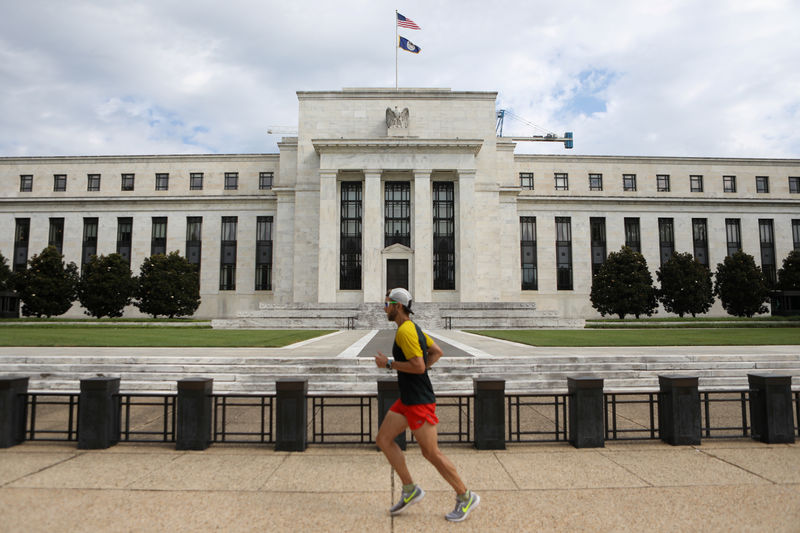JPMorgan’s Dimon weighs in on potential Fed chair candidates
Investing.com - Federal Reserve policymakers highlighted concerns about slowing global growth and trade tensions as headwinds, but stopped short of suggesting that a series of rate cuts should follow, according to the minutes of the Federal Reserve’s July meeting released Wednesday.
"Most participants viewed a proposed quarter-point policy easing at this meeting as part of a recalibration of the stance of policy, or mid-cycle adjustment, in response to the evolution of the economic outlook over recent months," the Fed minutes showed.
The Fed suggested that the best course of action would be to remain "flexible" and monitor incoming economic data amid uncertainty over when risks weighing on the economy, including the U.S.-China trade war would be resolved.
"In their discussion of the outlook for monetary policy beyond this meeting, participants generally favored an approach in which policy would be guided by incoming information and its implications for the economic outlook and that avoided any appearance of following a preset course," according to the release of the minutes.
The Federal Reserve cut its benchmark rate by 25 basis points to a range of 2.0% to 2.25% from 2.25% to 2.5% on July 31.
At its July meeting, the Federal Reserve cited “the implications of global developments for the economic outlook as well as muted inflation pressures” as reasons for cutting rates for the first time since the 2008.
But the decision to lower rates was not unanimous, the minutes showed. Esther George and Eric Rosengren dissented largely because economic indicators suggested the economy remained somewhat robust.
The minutes drew a muted reaction in markets, with many looking to Fed Chairman Jerome Powell's speech at Jackson Hole, Wyo. on Friday for further clues on monetary policy. Some also claimed the minutes were largely a non-event as the July meeting took place before President Donald Trump proposed to slap new tariffs on China. The tariffs, however, have been pushed back to Dec. 15 from from Sept. 1.
“If (Powell) believes that risks may warrant a ‘somewhat’ lower path for policy, then a 25bp cut will be confirmed and market pricing, which currently rests above that level, will need to adjust,” Morgan Stanley said in a note.
Powell has faced relentless pressure from Trump to deliver a big rate cut.
Trump claimed earlier this week that Powell had a “horrendous lack of vision" and called on the central bank to slash rates by 100 basis points and renew “some” quantitative easing. Today he likened Powell to a golfer that can’t putt with “no touch.”
The Fed, in its July statement, pledged to end its balance sheet shrinking program at the end of the month, two months earlier than initially anticipated.
